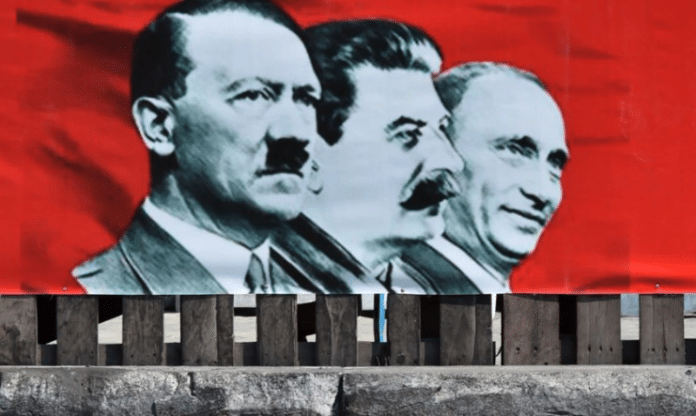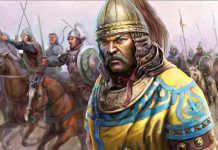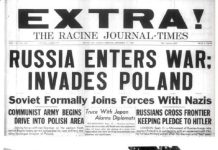Harvard Professor Robert C. Tucker, a political scientist and historian in his second Stalin biography, Stalin in Power: The Revolution From Above: 1928-1941, wrote:
“On 23 March 1933, the Fuhrer declared the Reich ready to cultivate friendly and mutually profitable relations with the Soviet Union. “It is above all the government of the National Revolution who feel themselves in a position to adopt such policy with regard to Soviet Russia.” He said that the common interests of Germany and Soviet Russia were both economic and political because the two countries had the same difficulties and the same enemies. The two countries could complement one another and render mutual services.
Stalin must have read this with keen interest… Hitler had already indicated in his talk with Khinchuck that one common interest, hence the potential basis of cooperation between his Germany and Stalin’s Russia were their respective revisionist claims upon different portions of Poland. Sedately, with no show of anxiety or alarm, Stalin signaled his interest in doing business with Berlin. Having reciprocated Hitler’s action in ratifying the protocol on an extension of the 1926 treaty, the Soviet government published an Izvestia editorial on 5 May 1933, which reaffirmed the Rapallo tradition…
Not long afterward Stalin began to communicate with Berlin via special channels, bypassing the Foreign Commissariat… Stalin did not forsake his earlier orientation on a new and greater Brest – a divisive diplomacy leading to a new European war in which Moscow would remain neutral until a time of its choosing and then carve out his envisaged “socialist borderland… He knew that for this war to be advantageous for Moscow, it must be protracted, and for that, both sides must be formidably strong…
By his collective-security diplomacy, in combination with his popular-front tactics in the Comintern, Stalin was assisting events to take their course toward a European war… To make sure that the European war would be protracted, he wanted Britain and France to be militarily strong enough to withstand the onslaught that Germany under Hitler was becoming strong enough to launch against them. This explains his moves to encourage ruling elements in both these major states to rearm with dispatch, and his orders to the French Communists to support the French military buildup.
“As a Bolshevism of the radical right, Stalin’s Russian national Bolshevism was akin to Hitler’s German National Socialism. Kinship is not an identity. There were differences… but the likenesses were many and deep. Both regimes… were anti-Communist. Both were chauvinist and idealized elements of the national past. Both were statist and imperialist. Both were enemy-obsessed. Both were terroristic and practiced torture in their prisons. Both were regimes of personal dictatorship with a leader cult”.
Stalin in his party congress speech set in motion talks leading to an alignment with Berlin… which raised the possibility of a negotiated neutrality that would ensure Hitler against what he had feared the most: a two-front war. This, Stalin could calculate, would enable Hitler to unleash aggression and him, while remaining neutral, to take over territories in Eastern Europe on an agreed-upon basis… Five days after Stalin addressed the party congress on 10 March, Hitler seized the remainder of Czechoslovakia…
In a conversation after World War II, Voroshilov said: “We in spite of it all thought that if Germany attacked Britain and France, it would bog down there for a long time. Who could have known that France would collapse in two weeks?”
Talks began in October 1939 and led to a conclusion on 11 February 1940 of a barter agreement under which very large numbers of Soviet strategic raw materials, including feed grains, oil, iron ore, scrap and pig iron, manganese, and platinum. Were exchanges for German industrial products, machinery, and armaments.”
Can we see exactly the same traits and methods in Putin’s Russia? Chauvinism. Idealization of the national past. Imperialism. Enemy-obsession. Terrorism and torture in prison. Personal dictatorship and Leader Cult?
In May of 1941, Stalin invited his Nazis allies for a military parade in Moscow. By that time, almost the entire European continent had been occupied. Britain was being bombed almost on a daily basis. Hundreds of thousands had been killed and millions of buildings and houses had been destroyed. And at this very moment, the “stronghold of peace”, Moscow, was welcoming its true friends:










